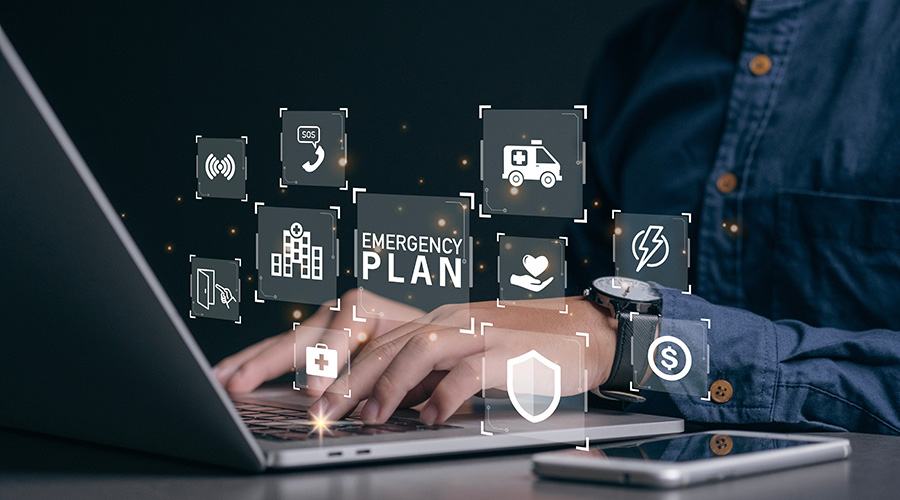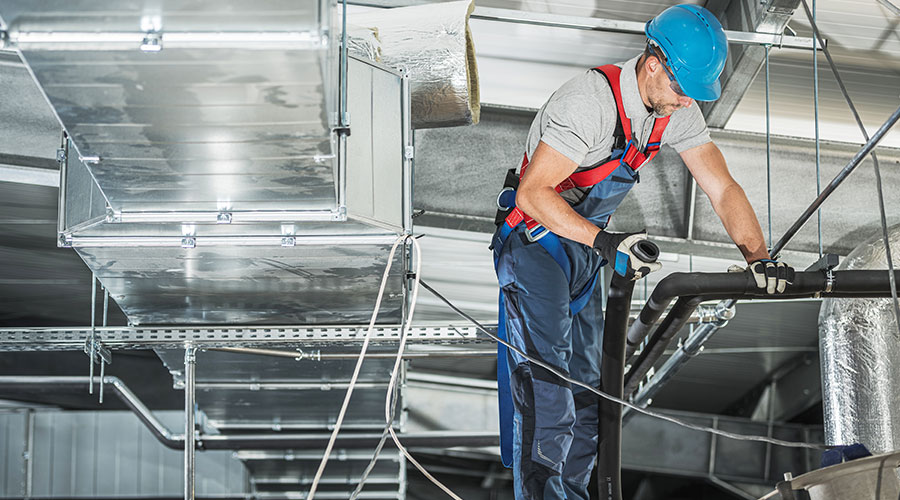Gameplan for Energy Efficiency, Safety
Improvements over the past 20 years in design have led to major improvements in boiler operating efficiency and safety. But if engineering and maintenance managers are to gain the benefits of those improvements, they must follow a comprehensive testing, inspection and maintenance program.
Without dedication to that program, boiler efficiency will decline rapidly. Even worse, ignoring maintenance activities places the boiler, maintenance personnel and building occupants at risk. It is estimated that more than 70 percent of all boiler failures can be linked directly to inadequate or improper maintenance practices.
If proper boiler maintenance is so important, why do so many organizations fail to do it properly? In some cases, it is a lack of knowledge of tasks that need to be done and why. In other cases, it is a case of false economics. Unfortunately, some organizations assume they can reduce costs by cutting back on boiler maintenance. In reality, reduced boiler maintenance leads to greatly increased operating costs as boiler efficiency declines.
Boiler maintenance programs consist of three basic elements: testing, inspection and maintenance. The individual tasks that must be performed and how often they should be performed will depend on the design of the boiler, the boiler’s capacity and the nature of the loads that it serves.
Safety and efficiency are the basic goals of such programs. Fortunately, the two goals are fully compatible. Managers who strive to maintain their boilers in a safe manner soon find out that those boilers also operate more efficiently. When establishing a program for boiler maintenance, it is important to remember that good boiler maintenance is an ongoing effort. It is not something that is done once a year or once every other year.
Boiler maintenance programs must address three general areas: the boiler vessel, the controls and the burner.
Vessel Maintenance
At least once a year, technicians should inspect all waterside and fireside surfaces of a boiler. All surfaces should be free of corrosion, scale, pitting and mud. No soot should be present on fireside surfaces. Anything that interferes with heat transfer within the boiler reduces operating efficiency and can result in localized hot spots, which can cause failures of boiler tubes.
By inspecting annually, it is possible to detect problems while they are developing, well before they result in costly damage.
Technicians also should inspect all refractory surfaces once each year. Damaged areas can result in localized overheating of the steel within the boiler, leading to possible failure. All damaged areas must be patched before returning the boiler to service.
Operators should monitor water-treatment equipment continuously. Water-treatment programs must be designed around conditions that exist in each application: the quality of make-up water, the quantity of make-up water used, and the types of metals present in the steam system.
Using the wrong chemicals can result in component corrosion, inadequate chemical use will not provide proper protection, and overuse of chemicals can produce damage and accelerated corrosion. In small systems, operators should monitor chemical treatment system operation weekly. In larger systems, they should monitor operations at least once per day.
Perhaps the most critical element in any vessel maintenance program is the proper operation of boiler safety devices. These units serve as the last line of defense against possible catastrophic failure. Of these, the two most important are the low- water fuel cutoff and the high-pressure relief valve.
Low-water fuel cutoffs are designed to turn off the flow of fuel to the burner if the water level within the boiler falls below a minimum set point. Continued operation with low water levels can damage the boiler from overheating or trigger an explosion. In small systems, operators should check water levels and the operation of the safety at least weekly. In larger systems, they should check water levels on each shift and the operation of the safety daily.
High-pressure relief valves are set to open at a preset pressure, above a boiler’s normal operating pressure but below the pressure where it can be damaged. Pressure relief valves should be tested annually.
Control Maintenance
Boiler controls regulate the unit’s firing, so proper maintenance is essential to the economical and safe operation.
Technicians should check the fuel valve weekly. When the valve closes, the burner should be fully extinguished immediately. Leaking fuel valves allow fuel to enter the boiler, creating a condition known as afterburn and increasing the risk for an explosion.
Flame-safeguard controls provide for the safe burner starting, operation and shut down. They sequence the start, from purging the boiler to verifying the flame after ignition. During operation, the control regulates the flow of fuel to the boiler.
If the flame goes out or if one of the boiler’s other safety devices signals a need to shut down the boiler, the flame safeguard control turns off the flow of fuel and locks out the burner. While flame-safeguard controls are designed to be fail-safe, they must be tested monthly.
Burner Maintenance
The key to efficient boiler operation is a well-maintained burner. Technicians should start with a visual inspection of the combustion taking place. Any change in the shape or color of the flame indicates a potential problem, such as worn linkages, dirt in the fuel nozzle, damaged refractory or soot buildup.
Technicians also must adjust burners properly for good combustion. Too-low air levels result in incomplete combustion and soot buildup. Too-high air levels reduce boiler efficiency and can lead to overheating of boiler components. Burners on small boilers should be checked monthly. In large boilers, burners should be monitored continuously.
The Boiler Log
One important tool for maintenance personnel is the boiler log. For small boilers, technicians can take readings of operating parameters once per week. For medium size boilers, they generally should take readings once per day or once per shift. In large applications, readings are taken hourly.
Readings typically include the steam pressure, stack temperature, feedwater pump pressure, and make-up water use. For natural-gas-fired boilers, readings should include the natural-gas pressure and metered use. For oil-fired boilers, include oil pressure and oil use.
By reviewing the log regularly, maintenance personnel can identify trends in system operation that can indicate performance changes or problems developing within the boiler. This process allows maintenance personnel to adopt a preventive approach rather than a reactive one.
Improving Efficiency
While good maintenance is the first essential step in achieving high boiler efficiency, managers have a number of options that can further improve efficiency. Some can be applied to existing boiler installations, and others are only suitable when replacing boilers.
In replacing a gas-fired boiler, consider installing a condensing boiler. These units have an operating efficiency in the range of 92 percent, as opposed to 75-85 percent for older units. Users of condensing boilers can expect to use 20-25 percent less energy annually than would be used by a conventional boiler in the same application.
Managers also can add economizers to existing installations. These units recover heat from the flue gas and transfer it to the feedwater, raising the overall operating efficiency. As a rule of thumb, for every 10- degree increase in feedwater temperature, efficiency improves 1 percent.
Managers also can add oxygen trim controls to the burner-control system. These controls continuously monitor the oxygen level in the boiler-flue gases and adjust the quantity of air delivered to the burner, minimizing the excess air delivered.
In conventional control systems, excess air levels typically are 10-20 percent. With oxygen trim controls, excess air levels can be reduced to 5 percent or less. How large the resulting savings will depend on the amount of excess air that was being supplied. In most cases, users can expect an annual reduction of 5-10 percent in energy use.
In replacement applications, consider installing multiple, smaller boilers instead of one large unit. Boilers operate at peak efficiencies over a fairly narrow operating range. By using multiple small boilers, operators can stage their operation to closely match the boiler load over a wider range of loads, improving overall operating efficiency. Multiple small boilers also provide several levels of backup in the event of a failure.
These measures, taken together and combined with a comprehensive maintenance program, can result in an annual savings of 25-35 percent in most applications. Equally important, unexpected downtime due to breakdowns will be reduced, and the overall safety of the installation will improve.
Related Topics:











